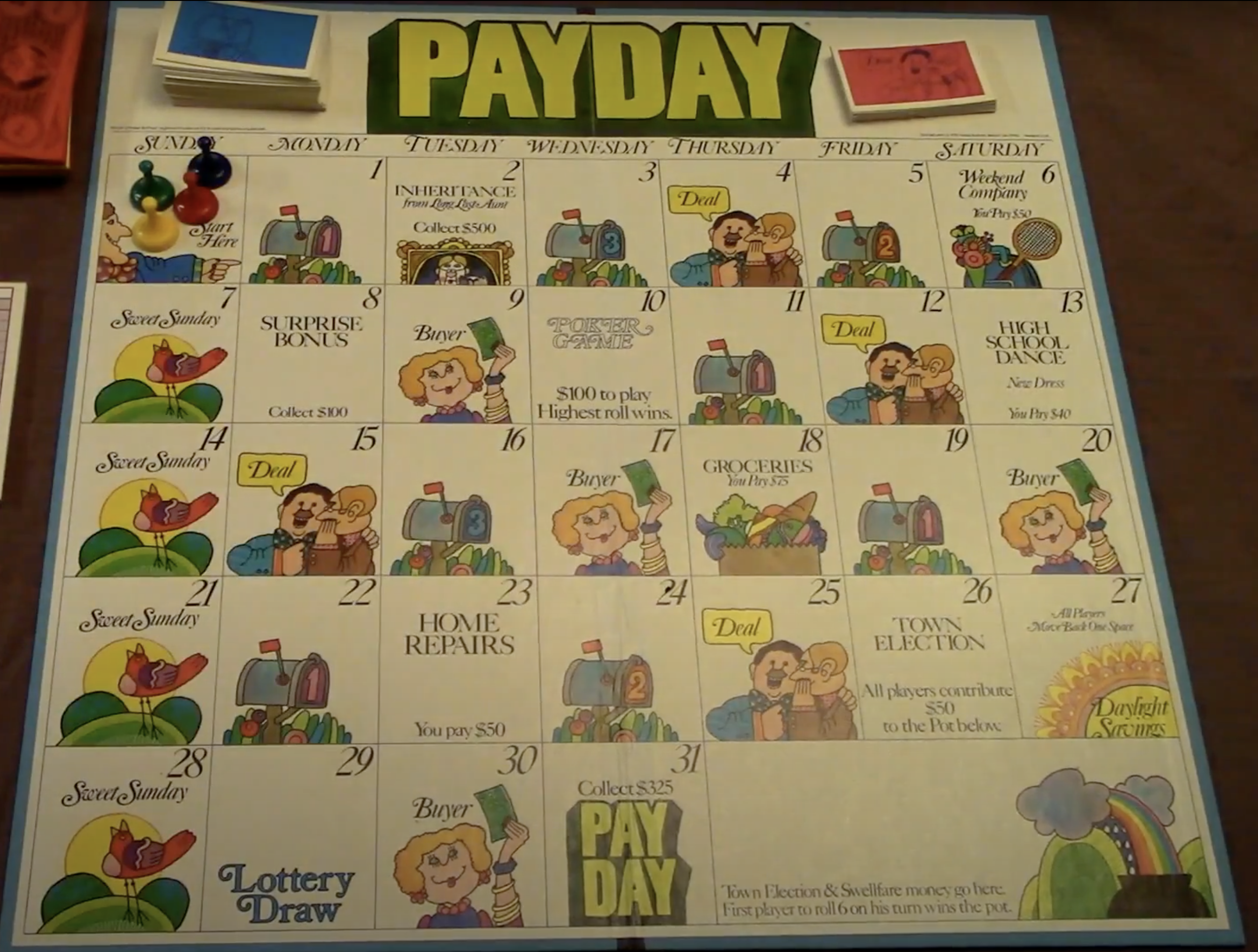
The game that I chose to analyze for this Critical Play & Competitive Analysis is called PayDay.
I played this game with some friends over this week. And I will say that the game was very entertaining.
“Pay Day” is a board game made by Hasbro, where the game simulates money management, with the game board resembling a calendar month. The players must decide on the number of cycles to play before ending the game prior to starting. During the game, players will collect expenses and wages, all of which must consolidate and resolve, if needed, on “pay day” at the end of the month. The winner is the player who accumulates the most amount of money at the end of the last month of play.
This game makes use of multiple game mechanics that, as a whole, create a very engaging experience for players:
- Fantasy: The premise of the game revolves around taking on the role of a new entity, starting from “zero” – i.e. zero debt and net worth. From here, everyone starts at the same level, making it accessible for anyone to win, depending on the decisions of the players as they progress through the game and luck from the cards.
- Challenge: Players must focus on making responsible decisions that can best benefit them in their finances. At the same time, players will run on situations where they will collect bills, or lose money via purchases and deals made. From this, the challenge becomes resolving all of these items on “Pay Day”, where users can pay off their bills, if they have the monetary means, or take out loans in order to do so. Regardless, all bills must be paid at the end of the month. Taking out loans comes at the expense of collecting 20% interest at the end of the month, along with the player’s bills and related. If played well, players who have a positive net worth are able to open a savings account at %10 interest at the end of the month as well. No players are allowed to have both a loan and a savings account.
- Fellowship: Pay Day involves components that prompt players to partner with other players in order to strike out “deals” that can benefit both parties. On the calendar month board, players can land on deal spaces, where they have the option to draw a deal card that offers the potential for players to keep the card on a condition – players must find a partnership in order to resolve this deal. Other players are incentivized to join on the partnership, since a deal can have a commission for players to profit from.
A good comparison game is “Monopoly” in structure. In fact, Pay Day was a more popular board game relative to “Monolopy” in the first year of release.
The game handles abuse of content within the game well, in my opinion. The norms are designed such that players follow a strict format of communication.
This game has truly been a fun experience, especially since I am very interested in personal finances and money management.


